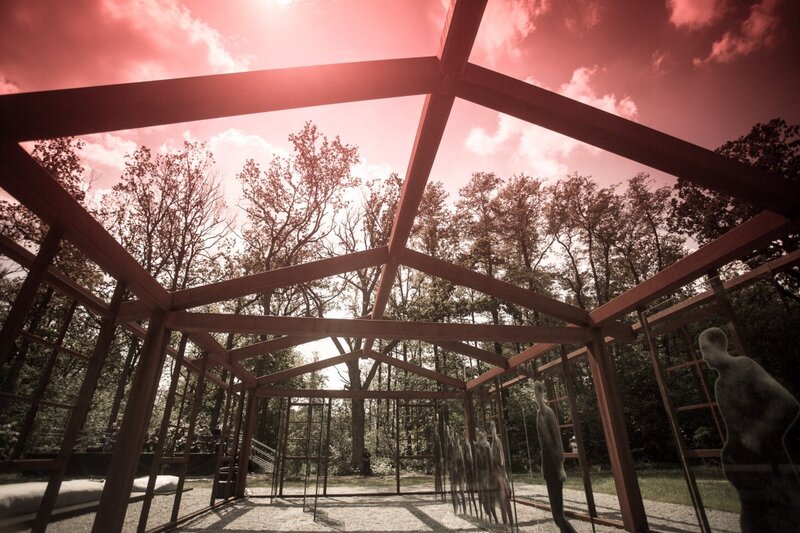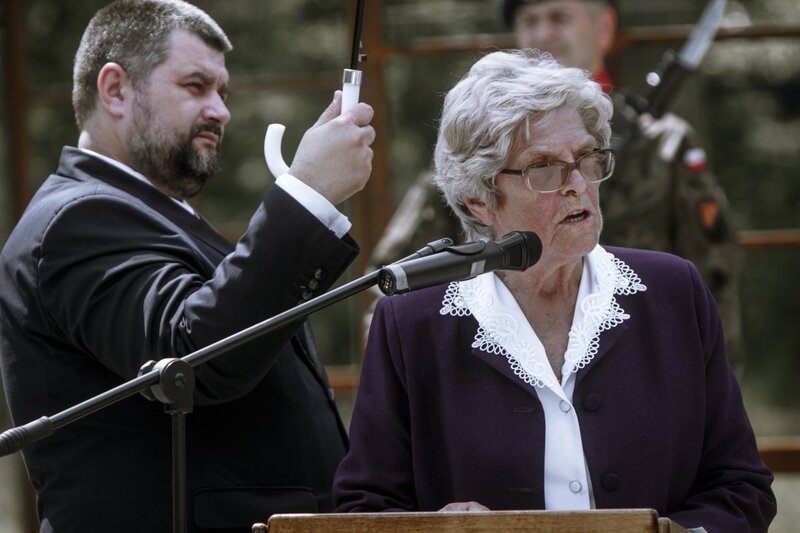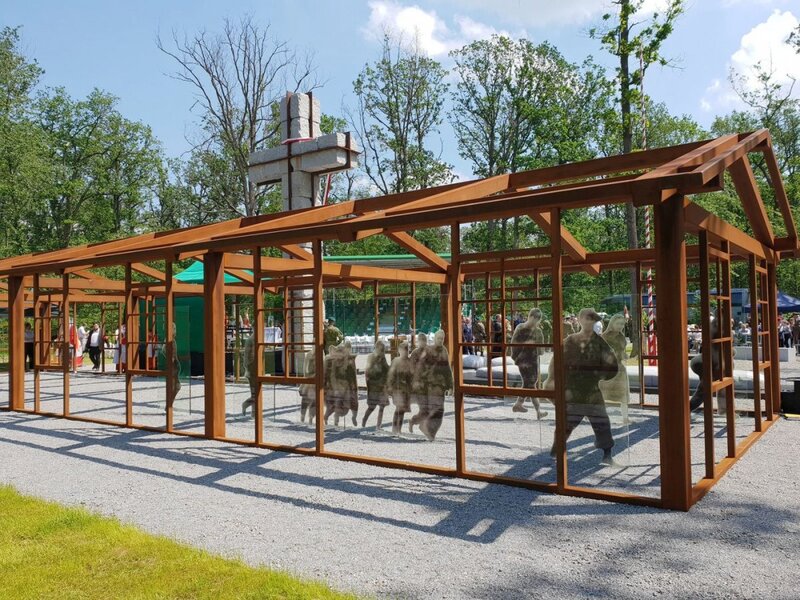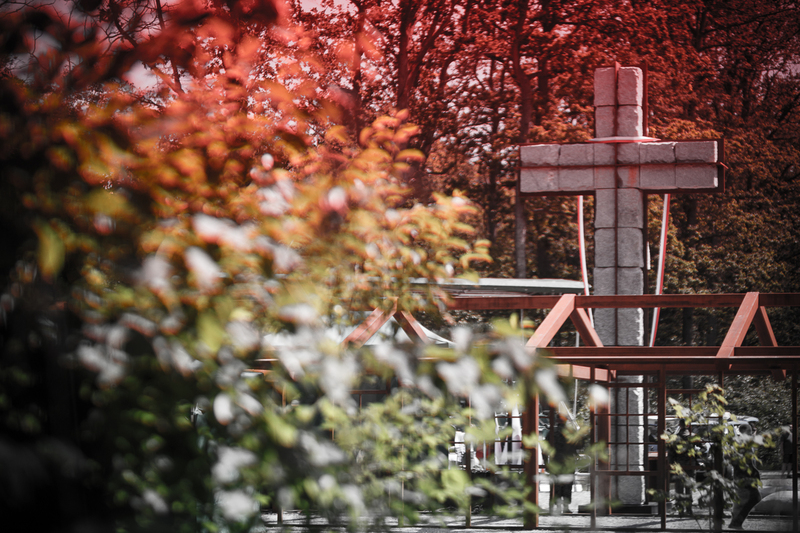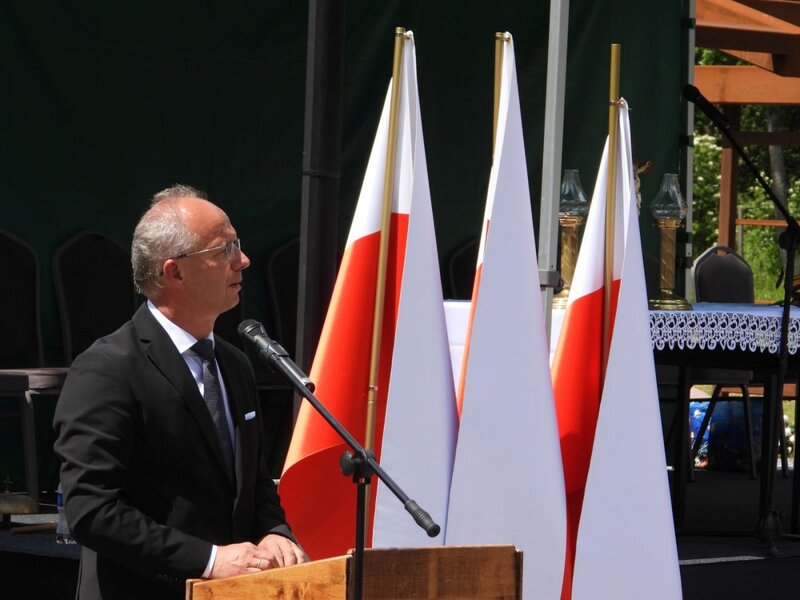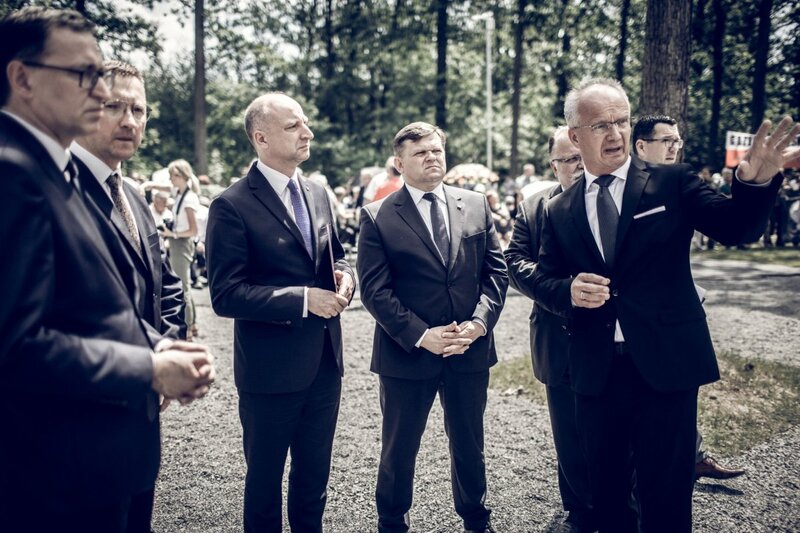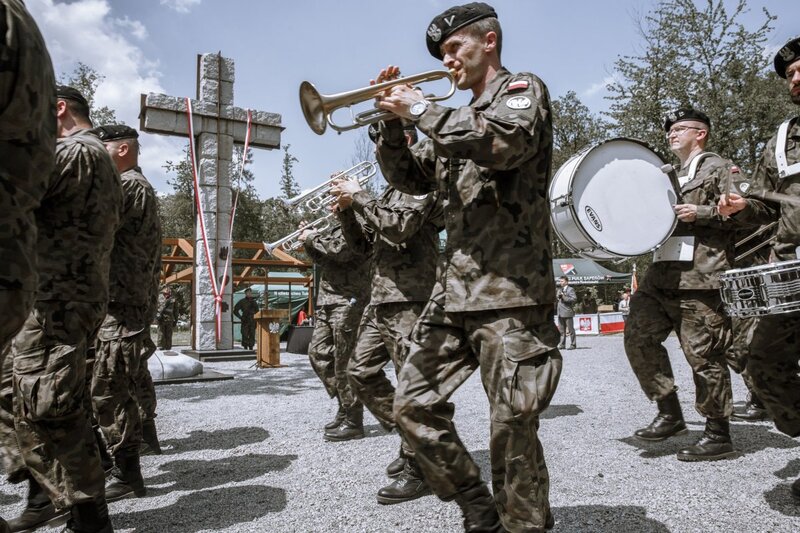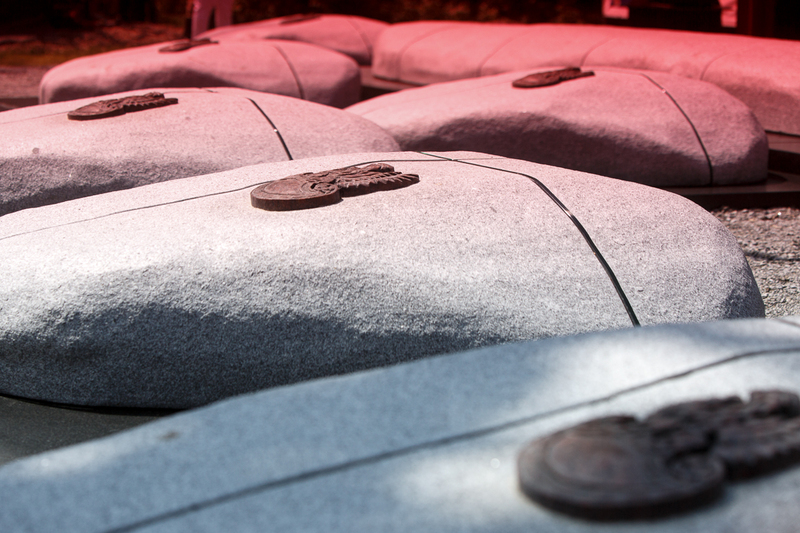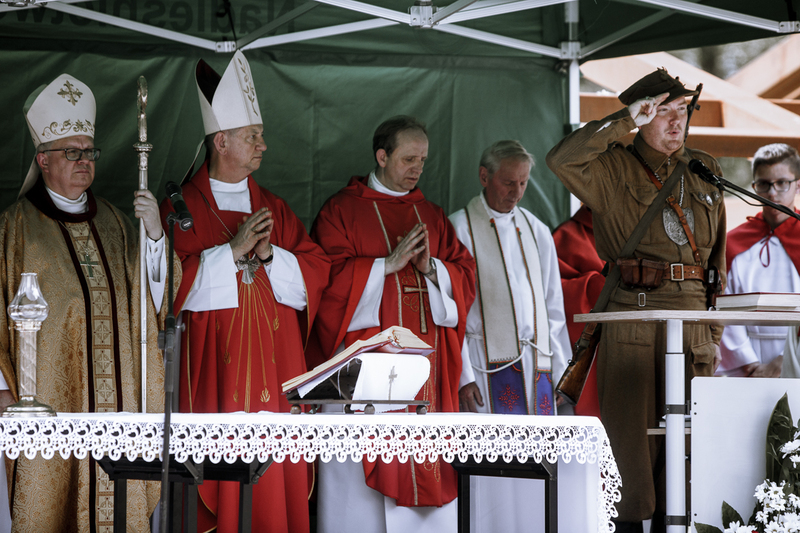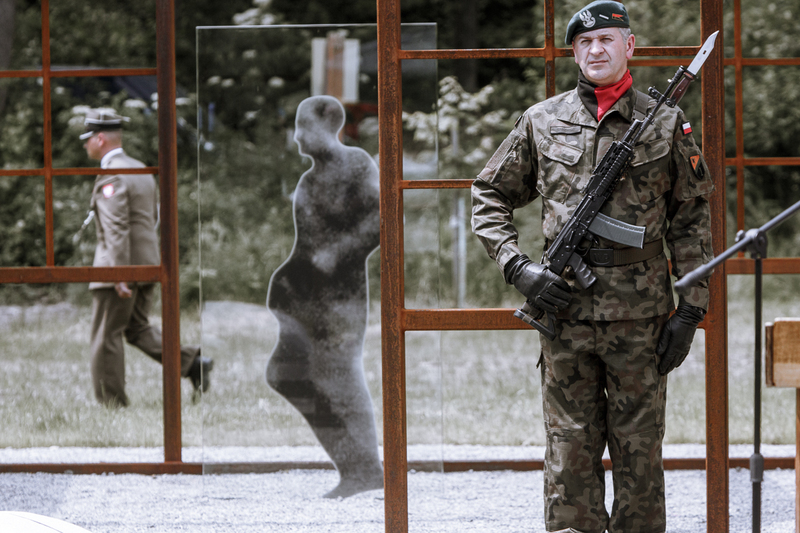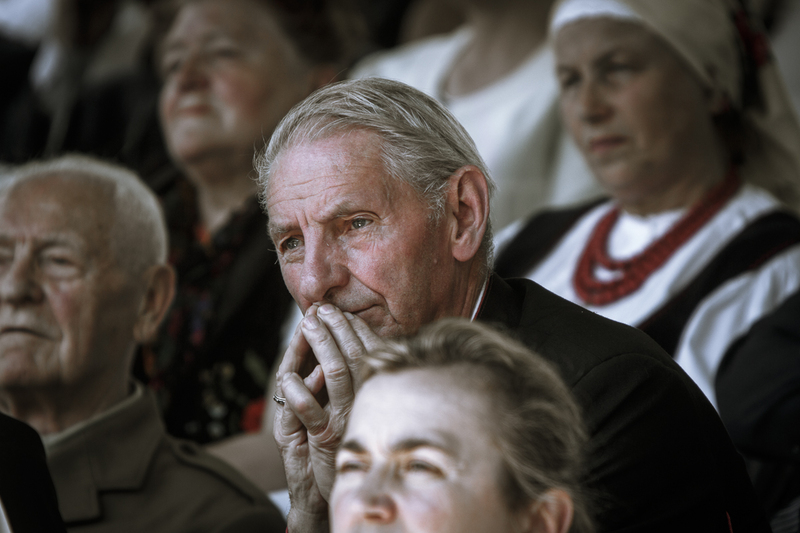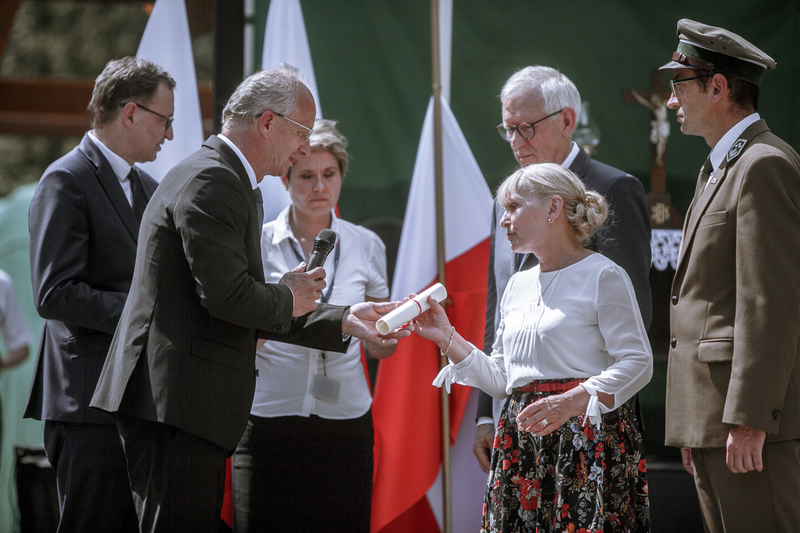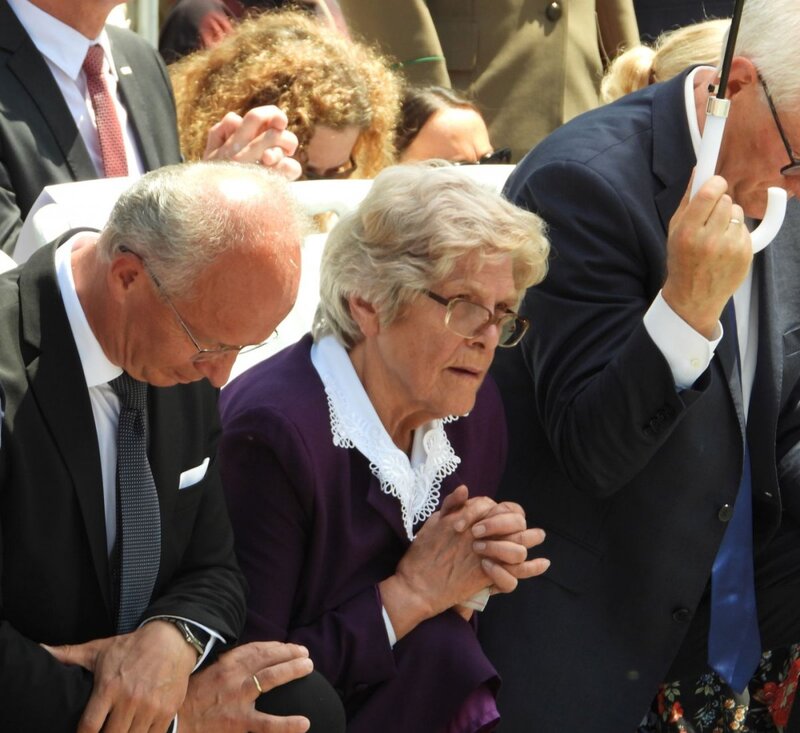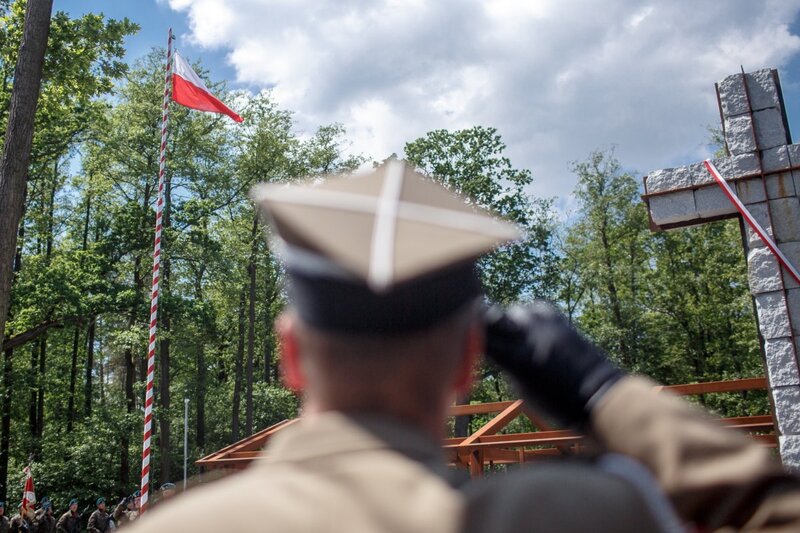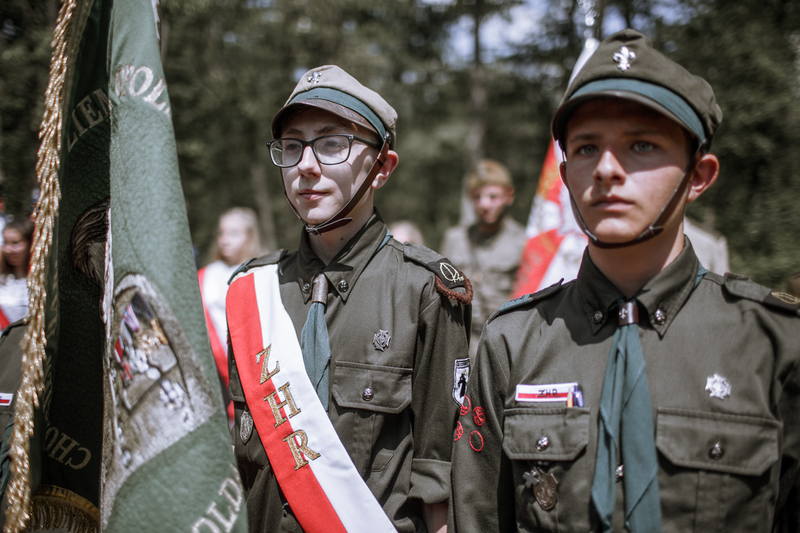The celebrations commemorating the soldiers of Capt. Henryk Flame aka "Bartek" began with a Holy Mass concelebrated by Bishop Józef Guzdek, a bishop of the Polish Army. The representatives of the families of the murdered soldiers, the President of the Institute of National Remembrance Dr Jarosław Szarek, his Deputy, Director of the IPN Office for Search and Identification, Krzysztof Szwagrzyk, and Opole voivode Adrian Czubak unveiled a monument erected at the crime scene. The Bishop of Opole, Andrzej Czaja, and the bishop of the Polish Army, Józef Guzdek, consecrated the commemoration.
The ceremony further included speeches by representatives of state authorities. A letter from the President of the Republic of Poland, Andrzej Duda, was read by the Minister of the Chancellery of the President Wojciech Kolarski. "Here, more than anywhere else, we realize that in those dramatic post-war years there really was a war over the soul of the nation, and the enemy sought to ruthlessly exterminate the rebellious, break their will to resist. For those who did not want to give up, there was no place in the country, there was no place on earth among the living. They were supposed to disappear forever, so that there would be no trace left of them, "wrote Duda in his letter. However, this did not happen, and after several dozen years, as emphasized in Prime Minister Mateusz Morawiecki ‘s letter to the assembled, "Poland pays homage to those who have not yet had a place in the pantheon of the heroes of the struggle for the independence of the homeland".
On behalf of the families of the murdered soldiers, the floor was taken by Alicja Reinhard-Flame, daughter of Cpt. Henryk Flame "Bartek". "This handful of heroic soldiers did not have the slightest chance with the communist, bestial regime and the Security Services, as I well remember. Despite the tragic memories, I am happy that the good Lord has allowed me to live long enough to see these soldiers, along with my father "Bartek", rehabilitated. I am pleased that I have managed to live long enough to see the times when they have regained their dignity and honor, which had always been due", said Henry Flame's daughter, asking for the preservation of the memory of Henryk Flame and his soldiers.
The murdered were honored with the call of the fallen, the salute of honor and the laying of wreaths at the foot of the monument.
- Today's beautiful ceremony is just the beginning, the IPN will not rest until it finds all Polish soldiers and victims of totalitarian regimes - said Prof. Krzysztof Szwagrzyk, thanking everyone who contributed to the creation of the monument.
On the site of the commemoration, in September 1946, officers of the communist apparatus of repression murdered several dozen Polish soldiers of the National Armed Forces. Similar executions took place in the Scharfenberg estate (today Dworzysko) and in the village of Barut (Opole province). According to estimates, up to 150 members of the detachment of Cpt. Flame (the "King of Podbeskidzie") could have been murdered in three executions -. It was the largest operation of this kind in post-war Poland, controlled by the central structures of the Ministry of Public Security, under which members of the anti-communist underground were not arrested and convicted by the court, but deceitfully gathered and then murdered as part of a thoroughly planned extermination operation. Due to the mass nature of the murder and the method used by security officers, sometimes these places are referred to as the "Silesian Katyń".
Capt. Henryk Flame aka "Bartek" was sworn into the National Armed Forces [NSZ] in the autumn of 1944. In the spring, he joined, along with his subordinates, the Citizens' Militia, in which he secretly acted, executing NSZ orders, and gathering weapons. When the Citizens' Militia began to eliminate the "uncertain element" from its ranks, Flame took up partisan activity outside the militia. In the spring of 1946, Flame’s group numbered as many as about 300 partisans. In their area of activity, they carried out many actions, including fighting against the Internal Security Agency [UBW] and Internal Security Corps [KBW]. The unit was characterized by outstanding courage and was widely supported by the local community. In 1946, Captain Flame held a parade of his soldiers in Wisła , which at the time was a bold manifestation of the strength of the unit, as well as the above mentioned social support.
In July 1946, security agents were introduced into the unit. They presented themselves as liaison officers of the National Armed Forces and convinced Flame to organize a transfer of some of the soldiers to the West, which was, in fact, part of the Ministry of Public Security’s operation aimed at liquidating the unit. The findings of the Institute of National Remembrance reveal that the soldiers were taken to the Opole region in three transports, where they were brutally murdered (blown up or perished in Katyń-style executions).
The Institute of National Remembrance has repeatedly conducted research in places where the remains of the murdered soldiers were suspected to have been located. During the second stage of activities (2016) in Grodków, mass graves containing both human remains (with evidence of gunshots or explosions) and numerous artifacts (including gorgets, a scout cross, a piece of paper with an army song written on it) were discovered. There were also several individual death pits and scraps of burnt personal belongings.
The monument prepared by the Institute of National Remembrance in Stary Grodków consists of a reconstruction of the barrack blown up in the autumn of 1946. Life-size glass boards - figures symbolizing the members of captain Flame’s unit have been placed in its interior. A few-meter long stone cross is located in front of the barrack. The places where the remains of soldiers and artifacts were found, have been marked by symbolic stone graves.
Photos:
Marta Smolańska
Sławomir Kasper
